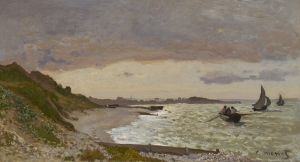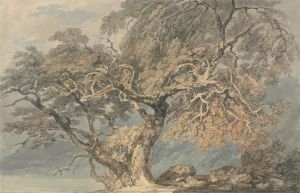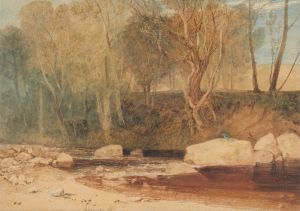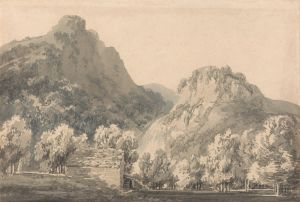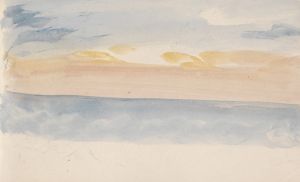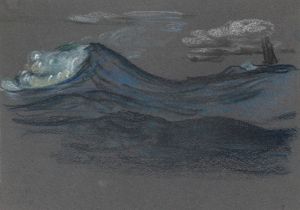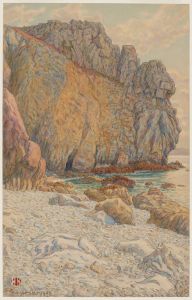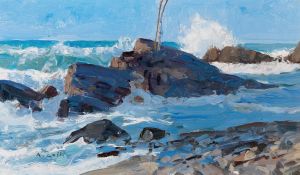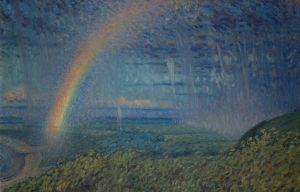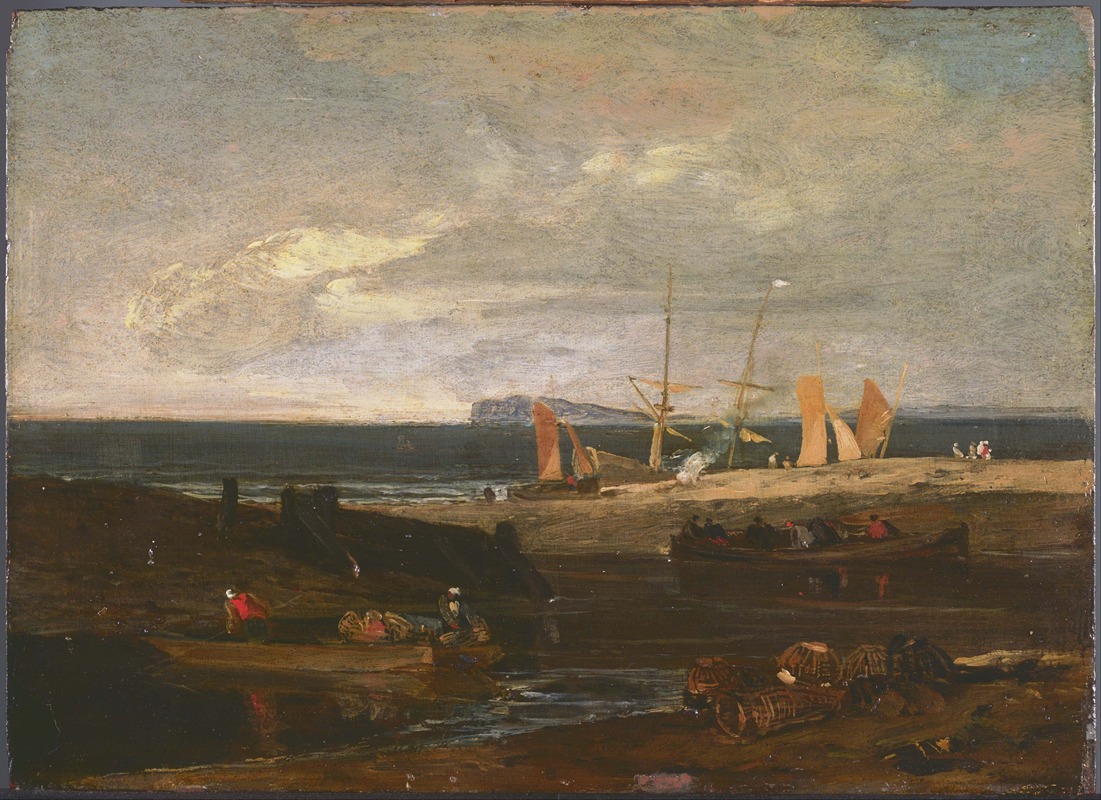
A Scene on the English Coast
A hand-painted replica of Joseph Mallord William Turner’s masterpiece A Scene on the English Coast, meticulously crafted by professional artists to capture the true essence of the original. Each piece is created with museum-quality canvas and rare mineral pigments, carefully painted by experienced artists with delicate brushstrokes and rich, layered colors to perfectly recreate the texture of the original artwork. Unlike machine-printed reproductions, this hand-painted version brings the painting to life, infused with the artist’s emotions and skill in every stroke. Whether for personal collection or home decoration, it instantly elevates the artistic atmosphere of any space.
Joseph Mallord William Turner, an eminent British painter, is renowned for his expressive colorization, imaginative landscapes, and turbulent marine paintings. Among his extensive body of work, "A Scene on the English Coast" stands as a testament to his mastery in capturing the dynamic interplay between sea and sky, a recurring theme in his oeuvre.
Turner was born in 1775 in Covent Garden, London, and demonstrated artistic talent from a young age. He was accepted into the Royal Academy of Arts at the age of 14, where he honed his skills and developed a keen interest in landscape painting. Over the years, Turner became known for his innovative use of light and color, which would later influence the Impressionist movement.
"A Scene on the English Coast" exemplifies Turner's fascination with the sea and the natural elements. Although specific details about the creation of this painting are limited, it is consistent with Turner's style during the early to mid-19th century, a period when he frequently explored maritime subjects. The painting likely depicts a coastal scene characterized by turbulent waters and dramatic skies, elements that Turner often used to evoke emotion and convey the sublime power of nature.
Turner's technique involved the use of oil paints to create luminous and atmospheric effects. He was known for his ability to capture the transient effects of light and weather, which is evident in "A Scene on the English Coast." The painting likely features a palette of blues, grays, and whites, with touches of warmer colors to highlight the interaction between sea and sky. Turner's brushwork would have been loose and expressive, allowing him to convey movement and energy.
Throughout his career, Turner traveled extensively, drawing inspiration from the landscapes and seascapes he encountered. The English coast, with its rugged cliffs and ever-changing weather, provided a rich source of material for his work. Turner's ability to depict the sea in its many moods—calm, stormy, serene, and violent—earned him the nickname "the painter of light."
Turner's influence on the art world is profound. His innovative approach to landscape painting and his exploration of the effects of light paved the way for future generations of artists. His work is often seen as a precursor to Impressionism, and his legacy continues to be celebrated in museums and galleries worldwide.
"A Scene on the English Coast" is a reflection of Turner's enduring fascination with the natural world and his ability to capture its beauty and power. While specific details about the painting's provenance and exhibition history may be scarce, its significance lies in its representation of Turner's artistic vision and his contribution to the Romantic movement in art.
In summary, Joseph Mallord William Turner's "A Scene on the English Coast" is a quintessential example of his skill in depicting the sea and sky. Through his innovative use of color and light, Turner created a work that captures the essence of the English coastline, showcasing his mastery as one of Britain's greatest landscape painters.





